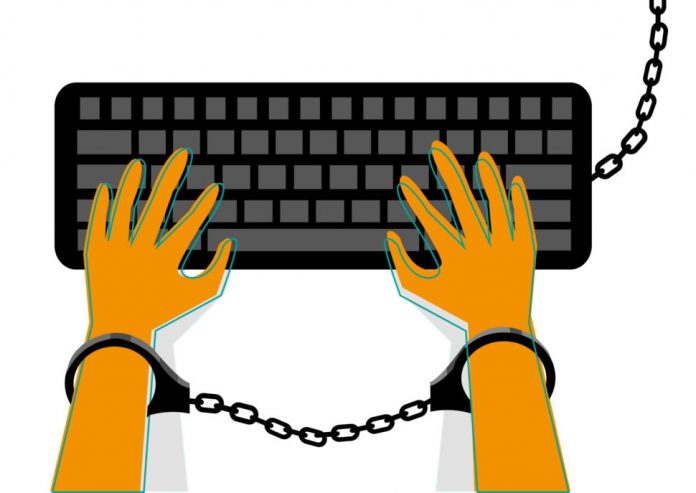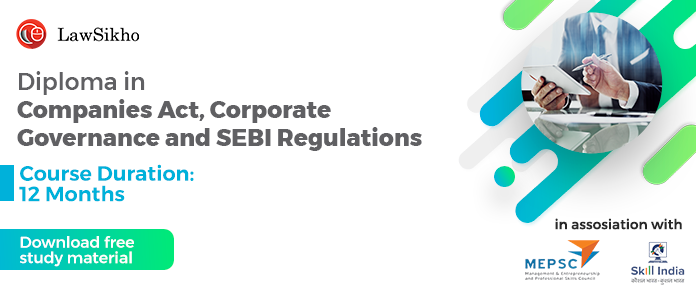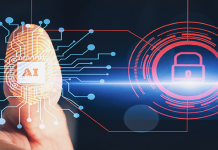This article is written by Bhavyika Jain, a learner at Symbiosis Law School, NOIDA. This article deals with how the right to access the internet is connected to the right to privacy as well as the right to education.
Table of Contents
Introduction
Everything is going electronic in today’s hi-tech world, and it’s becoming easier to reach everyone. The internet is so important that the car industry is now producing vehicles that run on electricity and can be accessed directly from mobile phones via the internet. The internet is ushering in a future of artificial intelligence and self-driving cars.
The internet has become one of the most essential elements of our lives. With the help of the internet, millions of lives have been transformed and are still continuing to be transformed around the globe. People’s reliance on the internet has grown tremendously. Since the invention of the internet and the public’s access to it, fields such as communication, education, trade, and commerce have advanced significantly.
Right to internet
Recently, the Parliamentary Standing Committee on Home Affairs considered that VPNs should be outlawed. It has requested that the Indian government block access to virtual private networks, claiming that such services allow criminals to stay anonymous online. This development comes just months after the government liberalised VPN usage by Other Service Providers (OSPs) in the wake of the coronavirus outbreak. VPNs allow people to work from home safely while assuaging employers’ anxieties of data loss and cyber dangers. We can protect our privacy, access geo-restricted information, avoid censored networks, and much more using a VPN.
The Caravan, a leading investigative journalism publication, was denied access to their Twitter account. Following a request from the Ministry of Electronics and Information Technology (MeitY) under Section 69A of the Information Technology Act, 2000, Twitter in India withheld roughly 250 accounts, according to news agency ANI (IT Act). The social media network withheld accounts of people who were tweeting and retweeting in favor of the continuing farmers’ protest against the central government’s newly enacted farm rules. The Kisan Ekta Morcha, an organization at the forefront of these protests, provided one such testimony.
The right to internet access has become law in various nations. Some governments are expected to work toward ensuring broad access and are prohibited from imposing unreasonable restrictions on citizens’ internet access.
The resolutions were looked upon by the UN Human Rights Council and the General Assembly that unambiguously state that internet access is critical for obtaining information and has a close link to education and knowledge. The right to access the internet, according to the Court, has been read into the fundamental rights to life, liberty, and privacy under Article 21. The court went on to say that it is an important part of the architecture of free speech and expression.
Right to education
The abrupt closure of schools, universities, and other learning places around the world has had a far-reaching impact on teaching-learning methodology, signalling a shift away from traditional educational practices and toward remote learning. Remote learning’s requirements have likely worsened existing disparities, making the realisation of one’s right to education dependent on one’s socioeconomic status. Digital literacy, on the one hand, and having a digital gadget, continuous supply of electricity, and uninterrupted internet access on the other, are terrible assumptions to make in the continuing crises, especially in developing nations like India. According to a 2019 research, only 24% of Indians own a smartphone, while only 11% of households own any form of digital device, such as PCs, laptops, tablets, and so on.
It has been observed that crises that disrupt education disproportionately affect girls more rather than boys. The same has been observed in the present situation when the world is dealing with the Covid-19 pandemic. Reduced educational resources have a direct impact on females’ education; more often than not, parents prefer to educate their sons with limited resources, leaving girls to suffer the brunt of the consequences. In the year 2020, more female suicides have been witnessed as they could not bear the costs of remote learning and as a result found it better to end their lives.
The 86th Amendment Act of 2002 included Article 21-A of the Constitution, which places a positive obligation on the State to aggressively implement the right to education. According to Article 21-A, the state is required to provide free and compulsory education to all children aged six to fourteen. The Right of Children to Free and Compulsory Education Act (RTE) of 2009 is the legislative outcome of Article 21-A’s requirement. The Act, which went into effect in 2010, mandates full-time obligatory primary education of adequate quality that adheres to the Act’s core norms and criteria.
By incorporating Article 21-A and enacting the RTE, India fulfilled a long-overdue obligation under Article 45 of the Constitution, which states that the state shall endeavour to provide free and compulsory education for all children until they reach the age of fourteen years within ten years of the Constitution’s inception.
The Supreme Court ruled in Avinash Mehrotra v. Union of India (2009) that the right to education includes the right to educate in a secure atmosphere. On education, the government cannot make concessions. Instead, it is required by law to identify ways to deliver education in a safe manner that protects children’s health.
In Radha M v. State of Karnataka (2021), the Karnataka High Court has ordered the state government to allocate cash and design a plan to provide textbooks, notebooks, and technology required for education delivery if schools do not reopen. Due to a shortage of funding, a basic right cannot be suspended.
The Supreme Court of India held in State of Tamil Nadu & Ors vs K Shyam Sunder (2011) that a child’s right to education should not be limited to free and compulsory education, but should also include the right to receive a quality education without discrimination based on their economic, social, or cultural background.
As knowledge has been more available to students, Internet connection has become a basic requirement. The Hon’ble High Court declared in Faheema Shirin RK vs. State of Kerala (2019) and others that the Right to Access the Internet is a part of the Right to Education and the Right to Privacy under Articles 21A and 21 of the Indian Constitution, respectively. Internet access not only expands students’ possibilities to learn, but it also improves the quality of education.
The meaningful exercise of the right to freedom of speech and expression on the internet is intrinsically linked to the availability of infrastructure. Infrastructure, in turn, is influenced by social and economic issues such as resource allocation, government policies, and involvement in the nature of resource regulation.
The situation in Jammu and Kashmir is far worse. The constitutional right to elementary education was never given to Jammu & Kashmir since a mandatory change to a 1954 Presidential Order was never carried out. Instead, in the Valley, elementary education was overseen by a state law passed in 2002 that lacked obligatory duties and a structure akin to the RTE Act. The RTE Act’s regulations were only applied to Jammu & Kashmir once it became a Union Territory on October 31, 2019. As a result, all children in the Union Territory have been denied access to education.
Government’s role
Since April 2020, the Indian government has made a number of steps to spread awareness and enhance online education, particularly in rural India. PRAGYATA Guidelines on Digital Education, internet access under the BHARAT NET plan, and other initiatives have been developed.
PM eVIDYA is an example of a comprehensive initiative that brings together all initiatives linked to digital education in order to offer multi-mode access to education. Several other efforts, such as DIKSHA and SWAYAM, are also part of the initiative. The positive benefits of these measures, on the other hand, are yet to be seen and thoroughly assessed. Meanwhile, the Union Education Minister has indicated that the ministry is working to make online education rules as student-friendly as possible and to close the digital divide as much as possible.
Way ahead
We are very much aware that the epidemic has disrupted education, particularly for kids who are socially and economically disadvantaged. Given the potential for the pandemic to disrupt our daily lives for years, governmental action in the creation of technology infrastructure that is compatible with the needs of social justice in the education sector is critical.
The government cannot continue to dodge responsibility for this egregious infringement of the right to education. To consolidate socio-economic inequities affecting underprivileged pupils’ access to education, targeted initiatives are required. While the Indian government and the Ministry of Education have taken several steps to address the situation, it appears that the socio-economic realities that exist and affect India’s education sector are too deep to be addressed by such short-term strategic efforts, and are bound to leave a large number of students, particularly in rural areas, behind.
Given that e-learning has become the new normal, it is the government’s job to develop separate policies, involving state governments as equal partners in the process. The recent approach of courts to consider the right to have internet connection as a part of the right to education as a result of cases like Shyam Sunder has established a new obligation on the State to guarantee that the right to education is not eroded by India’s current and expanding digital divide.
Conclusion
Because we live in an era where the internet is an integral aspect of individual life, the internet plays a critical role in the development of an economy. However, there is a case that internet access should be recognised as a separate basic right, maybe as part of Article 21’s right to life.
As a result, we can observe that India’s right to access the internet is progressing rapidly. In these challenging times of the pandemic, when education and most of our day-to-day activities are heavily reliant on internet connectivity, it is more important than ever for the State to acknowledge this right as a social measure for the upliftment of the masses. The problem must be resolved once and for all. Overcoming the coronavirus problem cannot come at the expense of India’s public school children.
References
- Right to Education & Emergence of a Digital Divide in Digital India | OHRH
- https://www.thehindu.com/sci-tech/technology/internet/access-to-internet-is-a-basic-right-says-kerala-high-court/article29462339.ece
- https://thewire.in/rights/internet-access-fundamental-right
- https://scroll.in/article/967553/as-classes-go-online-how-can-the-right-to-education-be-guaranteed-for-students-without-net-access
Students of Lawsikho courses regularly produce writing assignments and work on practical exercises as a part of their coursework and develop themselves in real-life practical skills.
LawSikho has created a telegram group for exchanging legal knowledge, referrals, and various opportunities. You can click on this link and join:
https://t.me/joinchat/J_0YrBa4IBSHdpuTfQO_sA
Follow us on Instagram and subscribe to our YouTube channel for more amazing legal content.
 Serato DJ Crack 2025Serato DJ PRO Crack
Serato DJ Crack 2025Serato DJ PRO Crack











 Allow notifications
Allow notifications



